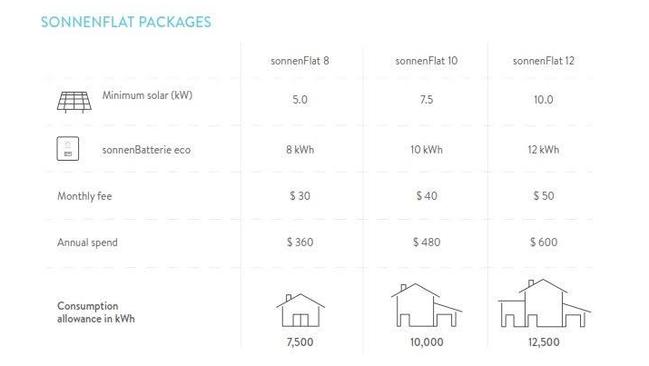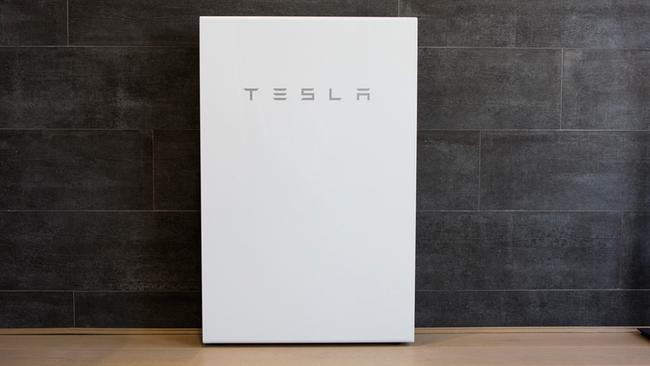The growing number of Australians moving to renewable energy solutions to combat growing costs
AS CRIPPLING energy price hikes begin sweeping across the nation this month, one business believes we have reached the tipping point.
AS CRIPPLING energy price hikes begin sweeping across the nation this month, more Australian households will look toward renewable energy solutions for the home.
Partly blamed on the closure of cheap coal-fired power stations, including Hazelwood in Victoria and Playford in South Australia, households are bracing for a 20 per cent energy bill increase.
The high price of gas, partially due to a shortage of east coast domestic supply, has also been a key driver in the rising cost of electricity.
Australia’s leading solar and battery installer Natural Solar believes we have reached a tipping point with rising costs.
“In the past six months there have been five times more installations than the company saw for the entire year of 2016,” Natural Solar chief executive Chris Williams told news.com.au.
“There has been a transition from early adaptors to a large number of mum and dad households looking for home energy storage solutions to help remove expensive electricity bills.”
With Tesla and LG Chem already offering natural energy solutions, Europe’s biggest battery provider Sonnen is the latest player to join the Australian market.
Having already got 60,000 customers in Germany, the solar battery provider is offering free power up to a certain amount for homes using its solar and storage system.
The “free power” deal removes Energy Australia, Origin Energy or other merchants from the equation, with Sonnen acting as both the manufacturer of solar power storage batteries and the retailer for your power.

In return for paying grid usage costs, customers allow Sonnen to access to a small amount of stored power from its batteries, which is made available to the grid during times of high demand — an amount usually less than three per cent of a fully charged battery.
The amount of free power depends on the customers choice of Sonnen’s 8, 10 or 12 kWh battery systems, with each offering allowances of 7500, 10,000, and 12,500 kWh per year, respectively.
Where traditional retailers charge a retailer monthly or quarterly grid access fee based on usage, Sonnen charges a monthly flat fee of $30, $40 or $50 based on its three systems.
Customers will be charged if they customers exceed this amount, although Sonnen said usage costs will still be a lower cost than what is already seen with traditional retailers.
Mr Williams said it would cost around $11,587 for users with their own solar panels installing and connecting a 6 kWh system, while systems needed solar panels were closer to $13,600.
And with a 10 years or 10,000 cycles warranty, customers would see an estimated a return on investment in five to six years.
“This is an absolute game charger and a highly disruptive technology that puts power back into the hands of the consumer,” he said.

WHAT ABOUT OTHER OPTIONS?
While Sonnen make a push to attract customers to its service, competitor Tesla has been driving on the Australian since the company’s first Tesla Powerwall installation 18 months ago.
As a follow up to the original Powerwall, launched in 2015, Tesla’s Powerwall 2 came in October 2016.
The Powerwall 2 improves on its predecessor by almost doubling the storage capacity from 7 kWh to a full 14 kWh.
With Australia’s average household electricity usage estimated to be around 16 kWh a day, Aussie households have the ability to offset their entire electricity bill or even move off the grid entirely with the Powerwall.
Jeff Pollard from Currans Hill in NSW first got solar panels installed when the federal government was offering rebates, but decided to make the switch to a Powerwall after the Solar Feed-in Tariff rates were removed.
“All the power we generated would go to the grid and we were forced to buy it back at a higher price,” he told news.com.au.
“We felt we weren’t being treated right by the government and since we were producing enough power to run our household we got a Powerwall installed and took matters into our own hands.”
Mr Pollard said even though his home had relatively low energy consumption, he has been happy with the results of the Powerwall.
“The battery is charged on a daily basis and we use most of the power, sometimes drawing only a tiny bit extra from the grid,” he said.
“Our last bill saw us with $180 in credit and we worked out that with the way we are tracking, the system will pay for itself in just four years.
“More than the low cost is the fact we don’t have to worry about the problems that with getting your power from the grid.”
With Natural Solar an installer for Tesla and Sonnen, Mr Williams said both offer benefits to customers.
He believes the key advantages of the Tesla Powerwall is the ability to offer full-house backup — timely given the increasing grid instability in some parts of the country.
Alternately, Sonnen could be a better fit for mid-high consumption households and those who might not require a full-house backup due to the limited time they spend at home.
“Each customer has different needs and with so many solutions, it’s just about finding what size would work best for their budget and household,” he said.
“Regardless of the choice, in five to 10 years, consumers will have greater control over how much power they consume, when it is used and how much it will cost them.”
Do you have solar solutions? Continue the conversation in the comments below or with Matthew Dunn on Facebook and Twitter.



